The Colorado River - Definition, Examples, Quiz, FAQ, Trivia
Explore the river that carved the Grand Canyon and supports millions of people
What is the Colorado River?
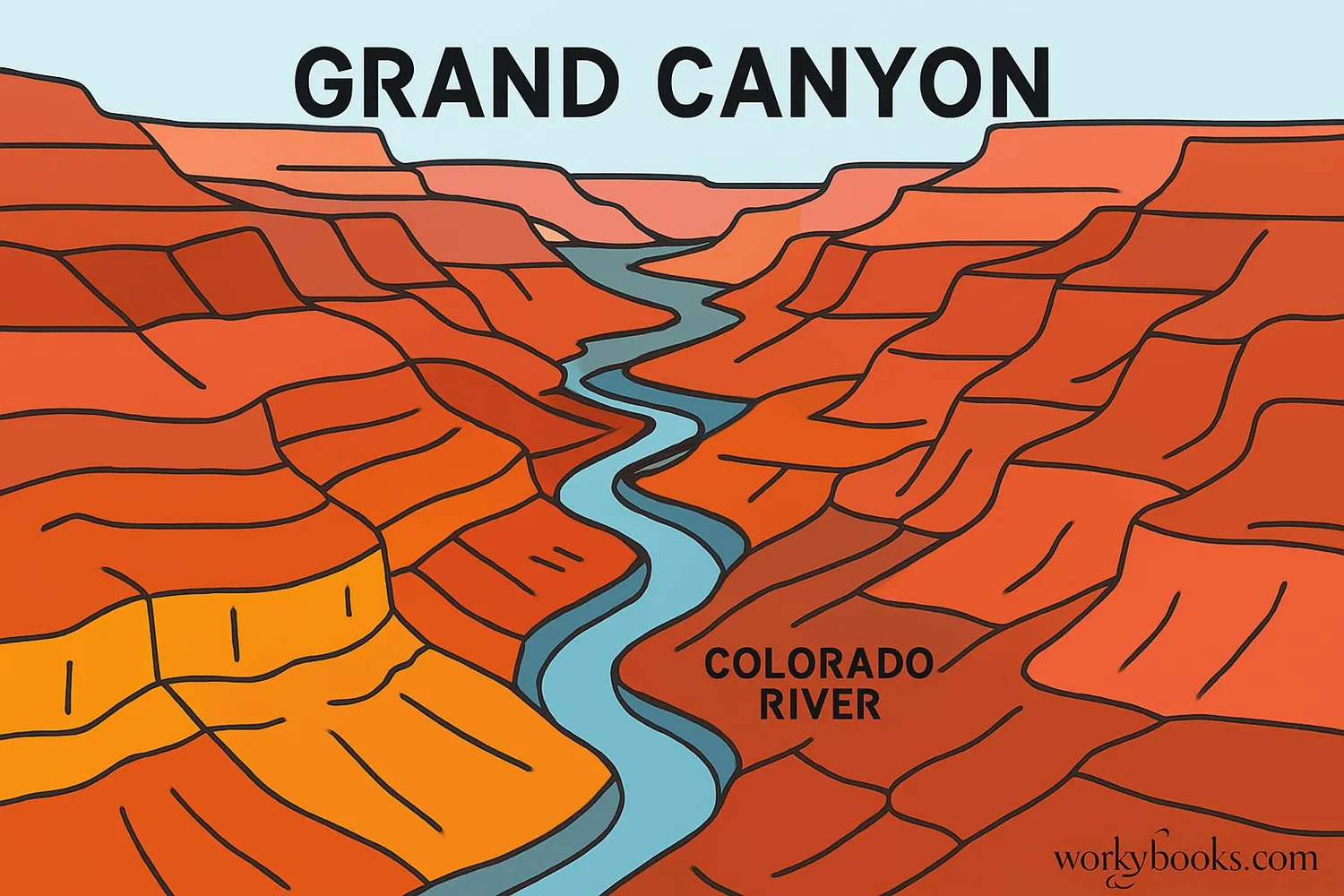
The Colorado River is one of North America's most important rivers. It flows 1,450 miles from the Rocky Mountains in Colorado to the Gulf of California in Mexico. Along its journey, it carves through amazing landscapes like the Grand Canyon and provides water for millions of people.
Here are some key facts about the Colorado River:
- It starts as snowmelt high in the Rocky Mountains
- It carved the Grand Canyon over millions of years
- The river flows through seven U.S. states and Mexico
- It provides water for about 40 million people
- The river irrigates nearly 5.5 million acres of farmland
Did You Know?
The Colorado River is sometimes called the "American Nile" because like the Nile in Egypt, it flows through desert regions and makes life possible in dry areas.
The Colorado River Basin
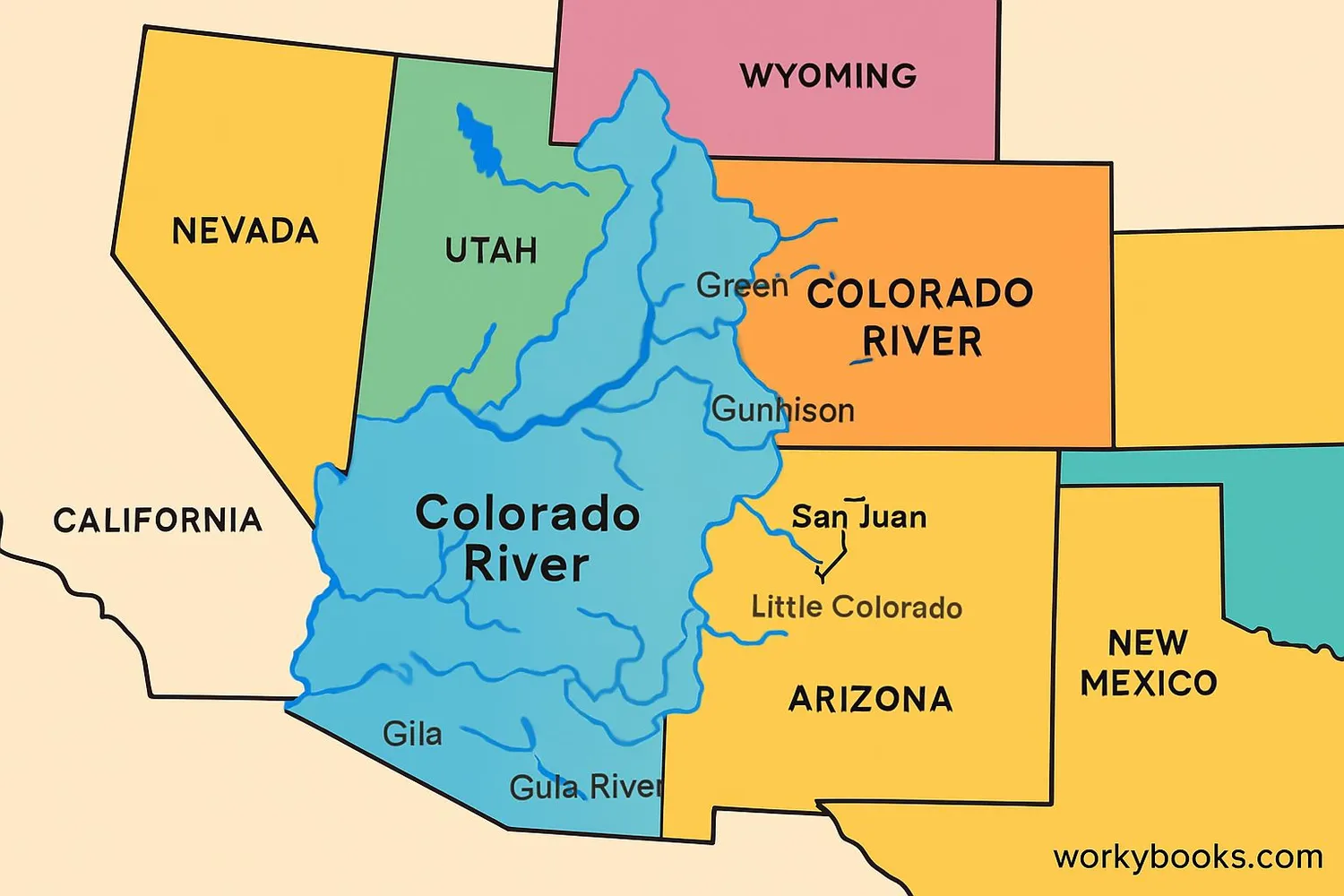
The Colorado River Basin is the entire area that drains into the Colorado River and its tributaries. It covers about 246,000 square miles across seven U.S. states and Mexico.
States in the Colorado River Basin:
The river basin is divided into two main regions:
Upper Basin: Includes Colorado, Wyoming, Utah, and New Mexico. This is where most of the river's water comes from as snowmelt.
Lower Basin: Includes Arizona, California, and Nevada. This is where most of the water is used for cities and farms.
Water Source
About 90% of the Colorado River's water comes from snow that falls in the Rocky Mountains of Colorado, Utah, and Wyoming.
History & Agreements
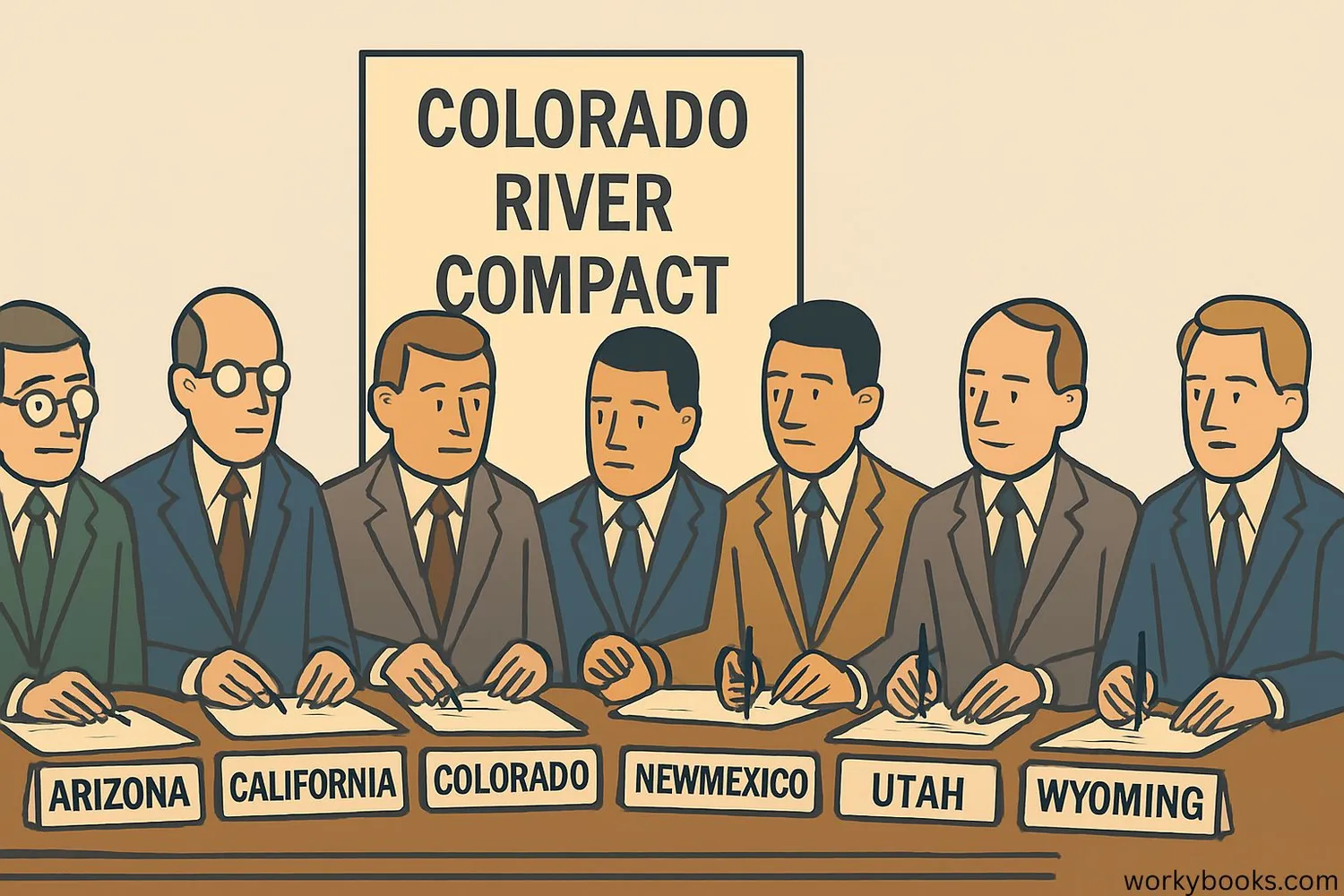
The Colorado River has a long history of agreements and disputes about how its water should be shared:
1922: The Compact
Seven states signed the Colorado River Compact to divide the river's water between Upper and Lower Basin states
1944: Mexico Treaty
U.S. agreed to provide Mexico with 1.5 million acre-feet of water annually
1963: Supreme Court
Court settled dispute between Arizona and California over water rights
2007: Drought Plan
States agreed on rules for shortage conditions during droughts
The Colorado River Compact is the foundation for managing the river. It divided the river's water equally between the Upper Basin (Colorado, Wyoming, Utah, New Mexico) and the Lower Basin (Arizona, California, Nevada), with each basin getting 7.5 million acre-feet per year. An acre-foot is about enough water to cover a football field one foot deep.
Water Rights
Water rights in the West follow the "first in time, first in right" principle. This means older water rights have priority during shortages.
Dams & Lakes
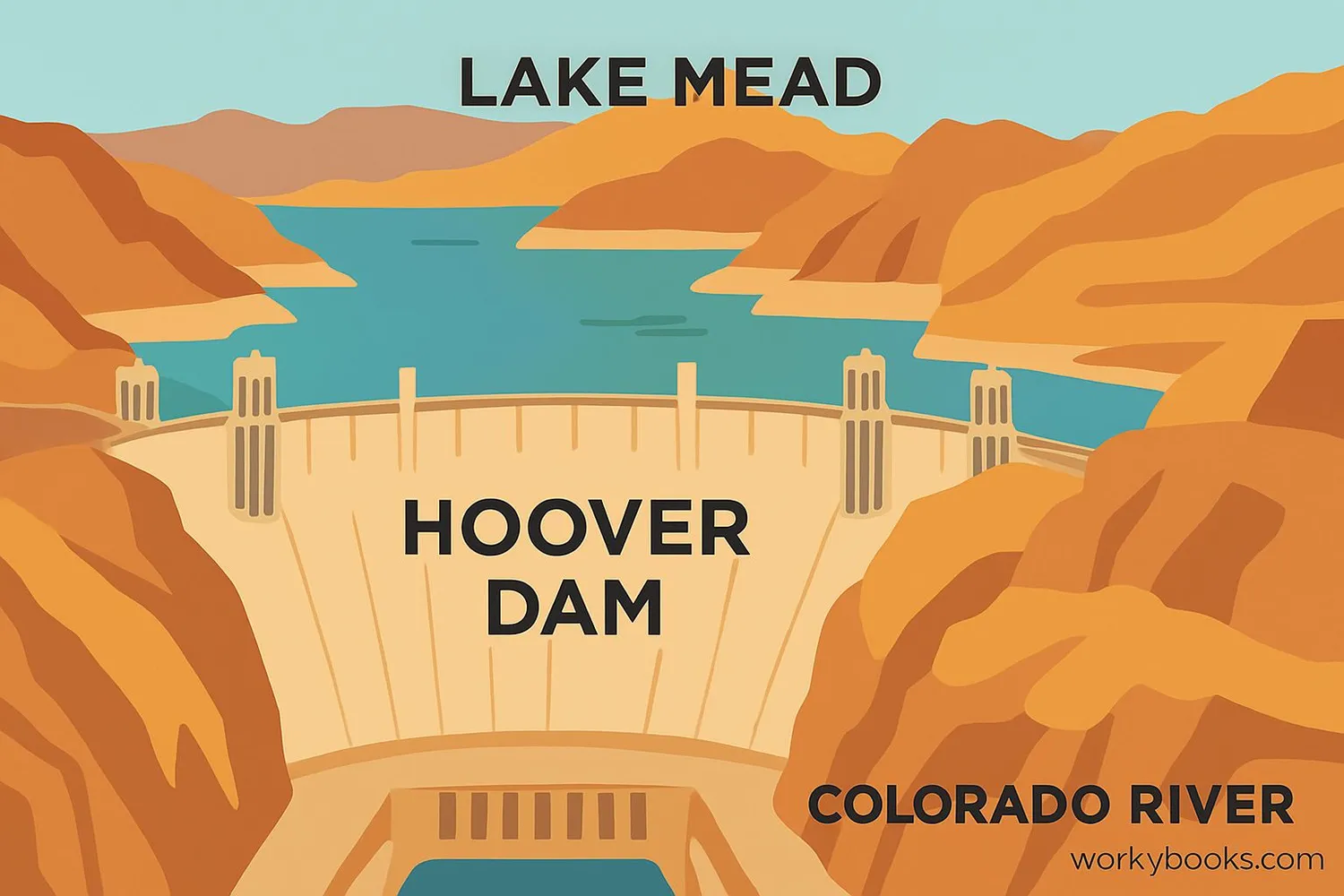
Many dams have been built on the Colorado River to store water, generate electricity, and control flooding. These dams create large reservoirs that provide water during dry periods.
Hoover Dam
Completed in 1936, created Lake Mead, provides hydroelectric power
Glen Canyon Dam
Completed in 1966, created Lake Powell
Other Major Dams
Davis Dam, Parker Dam, Imperial Dam, Morelos Dam
The dams on the Colorado River serve several important purposes:
• Water Storage: Reservoirs like Lake Mead and Lake Powell store water for times of drought
• Hydroelectric Power: Dams generate electricity for millions of people
• Flood Control: Regulate river flow to prevent flooding
• Recreation: Lakes provide opportunities for boating, fishing, and swimming
However, dams also change the river's natural flow and affect fish and wildlife habitats.
Engineering Marvel
Hoover Dam was the tallest dam in the world when completed in 1936. It stands 726 feet tall - as high as a 60-story building!
Water Supply & Challenges
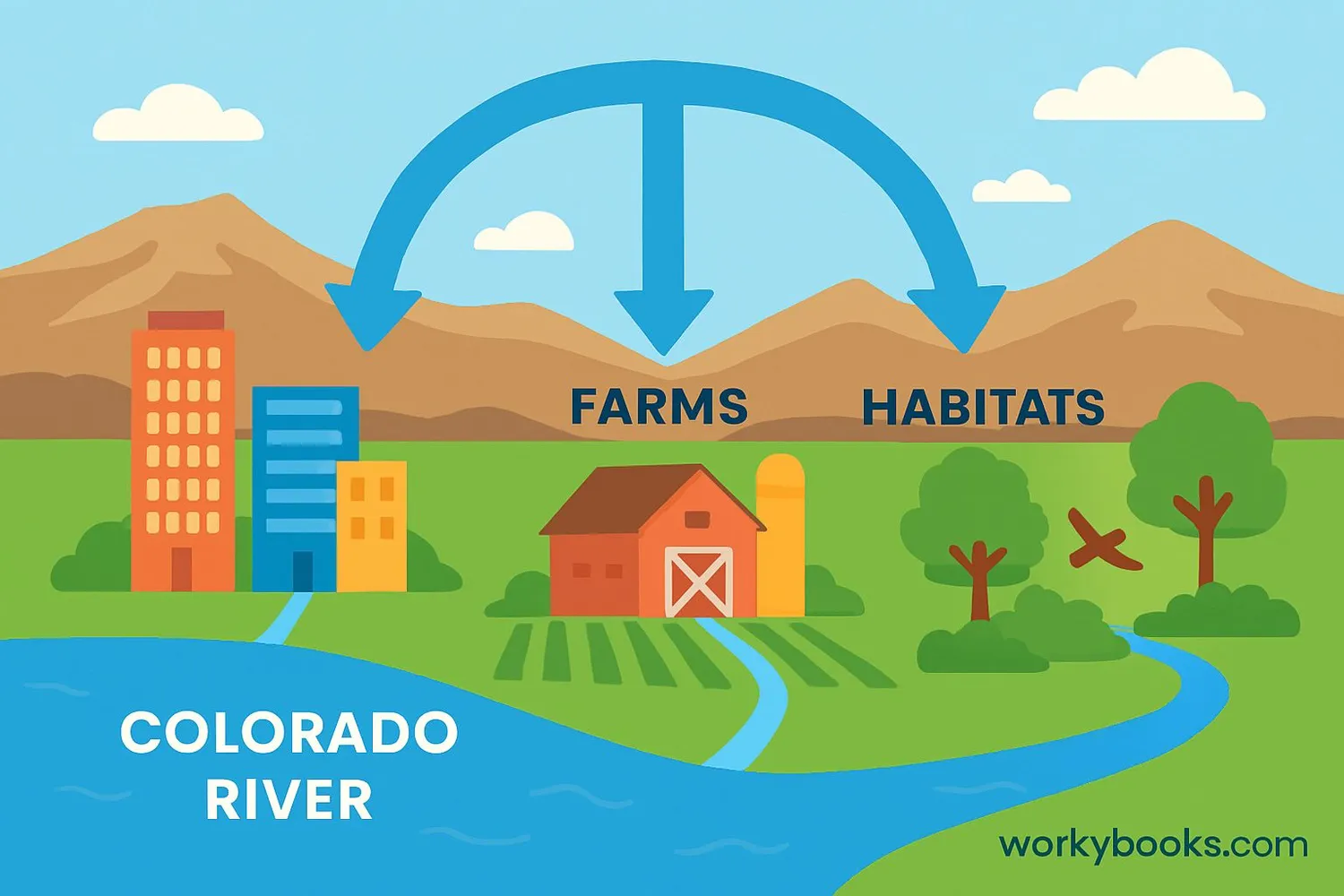
The Colorado River provides water for about 40 million people and irrigates nearly 5.5 million acres of farmland. However, the river faces significant challenges:
Drought
The Southwest has experienced a severe drought since 2000, reducing river flow
Overuse
More water is allocated to users than the river typically provides
Climate Change
Warmer temperatures reduce snowpack and increase evaporation
The water from the Colorado River is distributed to:
• Cities: Including Los Angeles, Phoenix, Las Vegas, and Denver
• Farms: Producing vegetables, fruits, and hay for livestock
• Native American Tribes: Who have legal rights to river water
• Nature: Supporting ecosystems and wildlife habitats
• Recreation: Rafting, fishing, and other water activities
With the ongoing drought, states and Mexico are working on new agreements to reduce water use and protect the river for the future.
Water Conservation
Every person can help conserve water by taking shorter showers, fixing leaks, and choosing water-efficient appliances.
Colorado River Quiz
Test your knowledge about the Colorado River with this quiz!
Frequently Asked Questions
Here are answers to common questions about the Colorado River:
Colorado River Trivia
Discover amazing facts about the Colorado River:
Ancient River
The Colorado River is between 5 and 6 million years old! It began carving the Grand Canyon about 5-6 million years ago, though the rocks it cuts through are much older.
Power Producer
Dams on the Colorado River generate about 12 billion kilowatt-hours of hydroelectric power each year. That's enough electricity to serve about 1.3 million households!
Water Conservation
Las Vegas has reduced its Colorado River water use by 26% since 2002, despite adding nearly 800,000 new residents. They achieved this through conservation programs and water recycling.
Size Comparison
Lake Mead, created by Hoover Dam, is the largest reservoir in the United States when full. At maximum capacity, it would hold enough water to cover the entire state of Pennsylvania with one foot of water!





